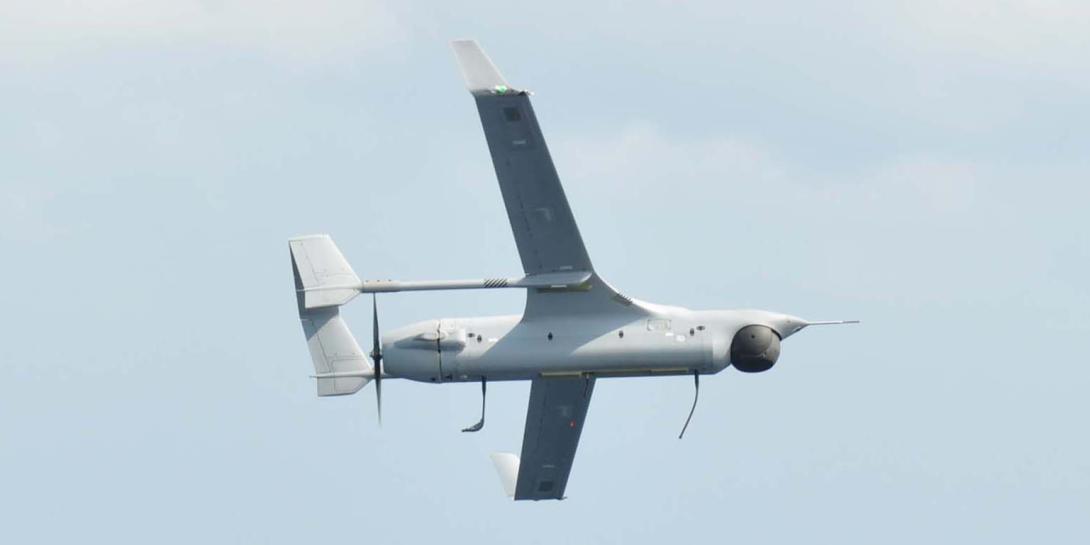Unleashing Radio Frequency Power
Over the next five years U.S. Defense Department researchers plan to build a prototypical system that will converge radar, communications and electronic warfare functions for a range of unmanned aerial systems, including the RQ-7 Shadow and the RQ-21 Blackjack. A do-it-all system will efficiently switch between intelligence, surveillance and reconnaissance; command and control; networking; and combat operations support missions without changing payloads.
Unmanned aerial systems require multiple payloads with dedicated components, including antennas, radio frequency (RF) circuitry and processors, to conduct communications, radar and electronic warfare (EW) missions. The single-function payloads cannot be installed on a compact aerial system at the same time because of the size, weight and power constraints. In order to perform a variety of missions, the drones often must return to base to swap out RF payloads.
“We build, buy and integrate discrete payloads. We put them on platforms, and this complicates our ability to exchange those platforms. It causes us to carry extra size, weight and power, and it constrains our ability to maneuver these systems in spectrum because they’re not well coordinated,” explains Ted Woodward, Defense Advanced Research Projects Agency (DARPA) program manager for the CONverged Collaborative Elements for RF Task Operations (CONCERTO) program.
To address the issue, DARPA kicked off a three-phase, five-year program in February aimed at combining all three functions on so-called group III drones.
“We want one payload that will allow us to do all three of those things. Through that process, we would enable new behavior of the system in time, space and spectrum,” Woodward declares. “Now a radar mode and an electronic warfare mode and a comms mode can blend, merge and switch between them rapidly.”
The ultimate goal of the CONCERTO program is to build a scalable architecture that demonstrates a converged payload supporting all three functions, Woodward adds. If the system is successful on group III unmanned aircraft, it may be scaled up or down to group II or group IV aircraft.
The program tackles four technical areas. The first examines the integration of the RF front end, meaning largely the aperture, antennas, receiver, transmitter and digital interface. The second, Woodward notes, focuses on the creation of an RF “virtual machine” that will “greatly facilitate the integration and migration of RF modes across hardware.”
The third technical area calls for the creation of a single controller for all three RF functions. Conventional, separate systems require dedicated resources and managers. “If I want to do radar, the radar manager has access to the radar system and nobody else is going to mess with him on accessing that,” Woodward points out. “But when we converge, now we have a converged management system and that system needs to arbitrate access to this shared resource and needs to do it in an intelligent way so that we don’t shortchange one or another of our goals.”
The fourth technical area will examine the kinds of diverse missions converged systems could execute and what their RF requirements would be. “I’m convinced that the scope of convergence is not something we fully appreciate yet, and we want to understand the particular missions that converged systems can do well,” Woodward states.
During the first phase, which is ongoing now and is expected to last 15 months, the DARPA team intends to establish how ready individual technologies are to be merged. The first phase also should result in a demonstration payload and a controller. An actual prototype will be developed in the third and final phase.
The program involves 10 teams, including BAE Systems, Raytheon, L-3, Northrop Grumman, Systems and Technology Research, Vencore Labs, Rockwell Collins and General Atomics. Some companies are on multiple teams.
In a written announcement, BAE officials said the company has been awarded two contracts under the program worth a combined $5.4 million. The company will focus on maximizing the RF capabilities of the hardware, such as bandwidth, frequency, distance and field of view, to ensure that all missions can be accomplished from the same components. BAE Systems also is developing a flexible, virtual RF processing engine that can be reconfigured to quickly support diverse and simultaneous operating modes.
Woodward reports that DARPA researchers saw the need for the CONCERTO program while working on other efforts, including the Distributed Battle Management and the System of Systems Integration and Technology and Experimentation programs.
The time appears to be right for converging RF technologies, Woodard concludes. “We’re testing the hypothesis that now is the time—at least at the small scale—to stop building discreet radar, electronic warfare and comms systems and start building RF systems that do all these things. If we do that, we will make our compact airborne platforms much more effective,” he concludes.





Comments